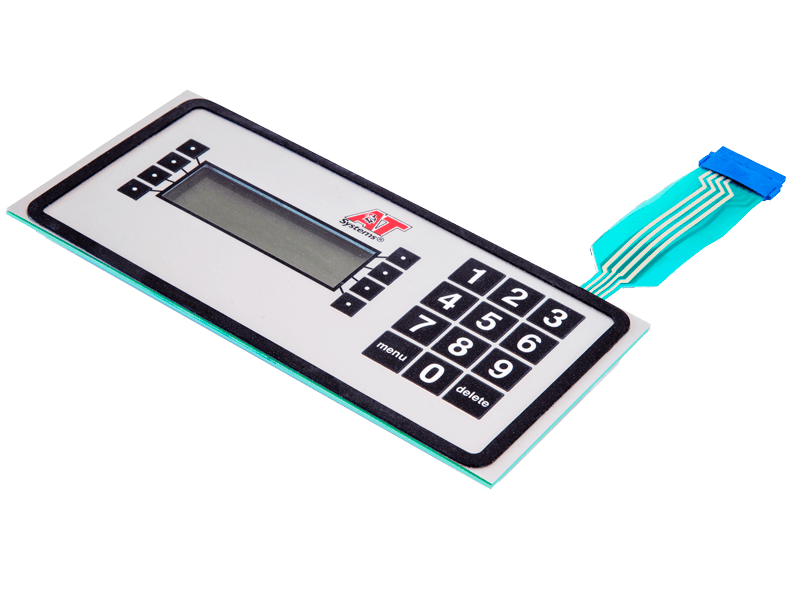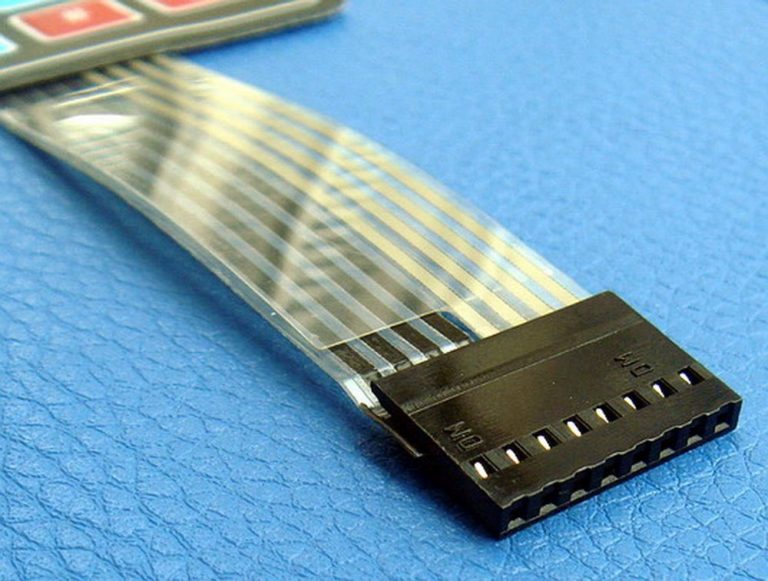An forward-thinking membrane switch manufacturer can develop cutting-edge features and materials.
An forward-thinking membrane switch manufacturer can develop cutting-edge features and materials.
Blog Article
Everything About Membrane Change: Understanding Its Layout and Performance
When you think of the control user interfaces in contemporary devices, membrane layer buttons typically enter your mind. These components are greater than simply buttons; they mix design and functionality flawlessly. Recognizing exactly how they function and what makes them effective can alter your point of view on day-to-day electronic devices. However, there are subtleties to their layout and efficiency that you might not be conscious of. Allow's discover what collections membrane layer switches over besides various other control systems.
What Are Membrane Layer Buttons?

Membrane layer buttons can likewise be personalized regarding shape, dimension, and graphics, enabling suppliers to produce special interfaces customized to specific items. Overall, membrane layer buttons play a substantial duty in enhancing user experience across a wide selection of applications.
Just How Membrane Layer Switches Job
When you push a secret on a membrane button, it turns on a straightforward yet efficient mechanism. The leading layer, often made from versatile product, presses down onto a conductive layer below it. This activity bridges the space in between conductive traces, finishing an electric circuit. As quickly as the circuit closes, it sends out a signal to the tool's controller, which translates your input.
You'll see that the tactile responses varies based on the button layout, offering either a soft click or an extra noticable feedback. When you launch the secret, the membrane layer returns to its original position, reopening the circuit and stopping the signal. This process happens nearly immediately, making sure a receptive user experience.
Membrane layer switches are prominent due to their sturdiness and resistance to dirt and wetness, making them ideal for numerous applications, from household devices to clinical gadgets. Recognizing this operation assists you appreciate their prevalent usage.
Secret Parts of Membrane Layer Switches
Comprehending the vital elements of membrane layer switches is fundamental for comprehending their performance and design. At the core, you'll find the graphic overlay, which offers the aesthetic interface for customers. Underneath that, there's a spacer layer that divides the circuit layers, ensuring that they do not make get in touch with till pressed. The circuit layer is where the magic occurs; it is composed of conductive traces that complete the circuit when you push the switch. An additional essential aspect is the adhesive backing, enabling the button to comply with surfaces safely. The safety layer guards versus environmental variables and use, expanding the button's life-span. Each part plays a significant role in guaranteeing trustworthy efficiency and user communication. By understanding these components, you'll obtain understanding into just how membrane layer switches over operate and their importance in numerous applications.
Materials Utilized in Membrane Switch Design
The efficiency and toughness of membrane layer changes greatly depend on the materials made use of in their layout. You generally come across polyester and polycarbonate as main substratums as a result of their superb toughness and adaptability. These products stand up to scrapes and chemicals, making them perfect for requiring atmospheres.
The conductive layers typically use silver or carbon, picked for their reliability and conductivity. membrane switch manufacturer. Silver offers superior efficiency, while carbon is a cost-effective choice. For the overlay, read you could consider a matte or shiny finish, depending on your aesthetic requirements and customer experience
Make particular to choose adhesives that withstand ecological aspects like temperature and moisture. Choosing the right materials will ensure your membrane switch stands the test of time.
Layout Considerations for Membrane Buttons
While creating membrane layer switches, it's vital to consider different elements that affect their capability and individual experience. Begin by focusing on the design and button size; ensure they're instinctive and simple to browse. Consider the responsive feedback you want to offer-- will individuals need a noticeable click or a softer touch? Additionally, consider the materials you'll utilize, as they'll impact durability and appearances.
Don't forget the graphic design; clear labeling and color comparison are substantial for visibility. Verify your layout fits environmental variables, like moisture or temperature level variants, which can influence performance. Bear in mind the significance of screening prototypes with real customers to gather comments and make necessary modifications. This iterative process aids you refine the design, validating it fulfills both functional and visual requirements effectively. By carefully considering these elements, you'll create a membrane button that boosts usability and complete satisfaction.
Applications of Membrane Layer Switches
Membrane switches are functional parts discovered in various applications, from industrial equipment to customer electronics. You'll see their effect in equipments that need sturdy interfaces and in devices that gain from streamlined layouts. Recognizing these applications helps you appreciate the capability and practicality of membrane layer buttons in daily innovation.
Industrial Equipment Use
When you're looking to improve the performance of industrial tools, membrane switches provide a trustworthy solution that combines sturdiness with easy to use layout. These switches are ideal for extreme environments, giving resistance to dirt, wetness, and chemicals. Welcome membrane layer buttons to simplify your procedures and improve overall efficiency.
Customer Electronics Assimilation
In the domain name of customer electronic devices, membrane switches play an important role in improving user interaction and device functionality. Membrane layer buttons also ensure resilience and resistance to dirt and dampness, expanding the lifespan of your electronic devices. By selecting membrane layer buttons, you improve not simply the capability but additionally the design of your gadgets, making daily interactions smooth and delightful.
Advantages and Drawbacks of Membrane Layer Switches
While membrane switches use an array of benefits, they additionally come with some drawbacks that you must think about. One significant advantage is their portable layout, making them suitable for space-constrained applications. They're likewise cost-effective, providing a durable see it here solution with a low production cost. On top of that, their smooth surface is easy to clean, enhancing hygiene in environments like healthcare facilities.

Membrane layer buttons can have a shorter life-span contrasted to mechanical buttons, especially under heavy use. They can also be much less tactile, which may affect user feedback throughout operation. Balancing these pros and cons will certainly assist you figure out if membrane layer buttons are the appropriate fit for your task.
Frequently Asked Inquiries
The Length Of Time Do Membrane Layer Changes Normally Last?
Membrane layer changes generally last between 5 to 10 years, depending on use and ecological problems. You'll want to evaluate aspects like wear, exposure to moisture, and temperature changes to gauge their durability properly.
Can Membrane Switches Over Be Customized for Specific Styles?
Yes, you can customize membrane layer buttons to fit certain layouts (membrane switch manufacturer). You'll have the flexibility to choose colors, forms, and layouts that match your job's requirements, ensuring they mix perfectly with your overall aesthetic
What Is the Cost Range for Membrane Layer Change Manufacturing?
The cost range for membrane layer switch manufacturing usually falls between $1 and $10 each, relying on elements like layout intricacy, amount, and materials. You can get quotes from makers to find the very best choice.

Are Membrane Layer Switches Water-proof or Immune?
Membrane switches can be designed to be water-proof or resistant, depending on materials used and building techniques. If you need them for damp settings, ensure you specify those needs during the layout process.
Exactly How Do Membrane Layer Switches Over Contrast to Standard Switches?
Membrane buttons are typically thinner and extra versatile than conventional buttons, using a smooth style. They're usually simpler to cleanse and incorporate, but could not offer the responsive comments you're utilized to with mechanical choices.
Conclusion

Report this page